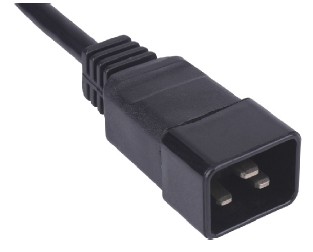- Power Cord
- America Power Cords
- Europe Power Cords
- Australia Power Cords
- UK Power Cords
- Korean Power Cords
- Japan Power Cords
- Italy Power Cords
- South Africa Power Cords
- Swiss Power Cords
- Argentina Power Cords
- Brazil Power Cords
- Israel Power Cords
- Denmark Power Cords
- China Power Cords
- Russia Power Cords
- Singapore Power Cords
- Saudi Power Cords
- Indonesia Power Cords
- Thailand Power Cords
- IEC 60320 Power Cords
- Locking Power Cord
- Dryer Power Pord
- Industry Plug
- Extension Cord
- Rubber Insulated Sheathed Flexible Cord
- PVC Flexible Power Cable
- Power Strip
- Power Cord
- America Power Cords
- Europe Power Cords
- Australia Power Cords
- UK Power Cords
- Korean Power Cords
- Japan Power Cords
- Italy Power Cords
- South Africa Power Cords
- Swiss Power Cords
- Argentina Power Cords
- Brazil Power Cords
- Israel Power Cords
- Denmark Power Cords
- China Power Cords
- Russia Power Cords
- Singapore Power Cords
- Saudi Power Cords
- Indonesia Power Cords
- Thailand Power Cords
- IEC 60320 Power Cords
- Locking Power Cord
- Dryer Power Pord
- Industry Plug
- Extension Cord
- Rubber Insulated Sheathed Flexible Cord
- PVC Flexible Power Cable
- Power Strip
Thailand Power Cord Standard
Thailand TIS Power Supply Cord Plug Flexible Cable
Plug and socket-outlet for houshold and similar purposes: plugs and socket-outlets with rated voltage not exceeding 250V for Thailand
Contents
|
1 . Plug Guide 2 . Power Cords 3 . Flexible Cables 4 . Reference |
Plug Guide
The type O socket and plug, rated at 16 amps, are the official standard in Thailand. The plug system was designed in 2006, but its use is not widespread as yet. It is currently gradually being phased in. The standard is described in TIS 166-2549.
 |
| Thailand Plug |
Type O consists of two power pins and an earth pin, which are round and have a 4.8 mm diameter. The power pins measure 19 mm in length, they have 10 mm long insulated sleeves and their centres are spaced 19 mm apart. The earth pin has a length of 21.4 mm. The centre-to-centre distance between the grounding pin and the middle of the imaginary line connecting the two power pins is 11.9 mm, which is exactly the same distance as in type B plugs. This is not a coincidence, since the hybrid version of this socket was originally designed to accommodate plug types A, B, C and O. In the long run, compatibility with American plugs is planned to be phased out, since the electrical network in Thailand operates at 230 V. Although they look similar, type O plugs are not interchangeable with the Israeli type H or the Danish type K power plugs。
.
Can somebody please enlighten me as to why on earth a country would develop a whole new kind of plug and socket system when there are several alternatives available? Standardizing on the international type N (or, for that matter, another safe and earthed plug system that is compatible with type C, such as F or E) is of course self-evident. As the Thai Government is going to phase out compatibility with plug types A and B anyway, why haven’t they adopted the type N standard, while at the same time allowing for a period of transition where hybrid B/N-receptacles as well as type N sockets may be installed? This is absolutely mind-boggling.
Power Cord
IEC 60320 Connectors
IEC 60320 power cables come in normal and high-temperature variants, as well as various rated currents. The connectors have slightly different shapes to ensure that it is not possible to substitute a cable with a lower temperature or current rating, but that it is possible to use an overrated cable. Cords also have different types of exterior jackets available to accommodate environmental variables such as moisture, temperature, oils, sunlight, flexibility, and heavy wear. For example, a heating appliance may come with a cord designed to withstand accidental contact with heated surfaces.
Flexible Cables
PVC Insulated Flexible Cord
| Cable type | Number of cores conductors Section mm2 |
| H03VVH2-F ( Flat) | 2 x 0.5-0.75 |
| H03VV-F | 2-4 x 0.5-0.75 |
| H05VVH2-F (Flat) | 2x 0.75-1.0 |
| H05VV-F | 2-5 x 0.75-4.0 |
Rubber Flexible Cord
| Cable type | Number of cores conductors Section mm2 |
| H03RT-H | 2-3 x 0.75-1.5 |
| H05BB-F | 2-4 x 0.75-2.5 |
| H05RN-F | 2-3 x 0.75-1.0 |
| H05RR-F | 2-5 x 0.75-4.0 |
| H07RN-F | 2-5 x 1.0-4.0 |
Reference
1 . Thai Industrial Standard TIS 166 2549 2006 (PDF - 700KB) Thailand New standard TIS Plugs and socket outlets for domestic and similar purposes.
- Contact Us
- Simen Twon,Yuyao City,Zhejiang,China,315472
- 86-0574-62162348
- 86-0574-62160100
- [email protected]
- hoobo.show1
- Terms and Conditions
- Privacy Statement
- Need help
- Home
- About us
- Products
- Download
- News
- Equipments
- Tech-Documnets
- Contact
- Products
- Power Cord
- IEC 60320 Power Cords
- Locking Power Cord
- Dryer Power Pord
- Industry Plug
- Extension Cord
- Rubber Insulated Sheathed Flexible Cord
- PVC Flexible Power Cable
- SUBSCRIBE
- Join us and get detail information,technical parameter and new products etc.
- [email protected]
- hoobo.show1
- 86-0574-62162348
- 86-0574-62162348




























